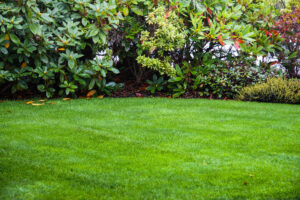Spring into Action With This Guide to Preparing Your Bermuda Turf Grass for the Season In Georgia
As the temperatures begin to rise and the days grow longer, it’s time to prepare your Bermuda turf grass for the upcoming spring season. Proper spring maintenance is crucial for promoting healthy growth, lush greenery, and a vibrant lawn throughout the warmer months. As a seasoned landscape professional, I’ve compiled this comprehensive guide to help homeowners navigate the essential steps for getting their Bermuda turf grass ready for spring. From soil preparation and fertilization to mowing and weed control, we’ll cover everything you need to know to achieve a thriving lawn that’s the envy of the neighborhood.
Assessing Your Lawn’s Condition
Dallas, GA Soil Testing
Before diving into spring lawn care, it’s essential to assess the condition of your soil. Conduct a soil test to determine its pH levels, nutrient content, and overall health. Soil testing kits are readily available at local garden centers or through agricultural extension offices. Based on the results, you can adjust your fertilization and amendment strategies accordingly to ensure optimal soil health.
Thatch and Compaction
Check for excessive thatch buildup and soil compaction, as these issues can hinder water and nutrient uptake by your Bermuda turf grass. Thatch is a layer of dead grass and organic matter that accumulates between the soil surface and the base of the grass blades. If thatch exceeds half an inch in thickness, it should be removed through dethatching or aerating processes to promote healthy turf growth.
Spring Lawn Care Essentials
Fertilization
Spring is a critical time to fertilize your Bermuda turf grass, providing it with the nutrients needed for vigorous growth and vibrant color. Choose a high-quality, balanced fertilizer specifically formulated for Bermuda grass and apply it according to the manufacturer’s instructions. Look for products containing nitrogen, phosphorus, and potassium, which are essential for promoting strong root development and overall turf health.
Weed Control
Spring is also prime time for weed emergence, so it’s essential to implement a proactive weed control strategy to keep invasive species at bay. Apply a pre-emergent herbicide to prevent weed seeds from germinating and establish a dense, healthy turf that naturally inhibits weed growth. Additionally, spot-treat any existing weeds with a post-emergent herbicide to eliminate them before they can spread and compete with your Bermuda grass.
Irrigation
Proper watering is crucial for maintaining a healthy Bermuda turf grass lawn, especially as temperatures rise in the spring. Water deeply and infrequently to encourage deep root growth and drought tolerance. Aim to provide your lawn with approximately one inch of water per week, either through natural rainfall or supplemental irrigation. Adjust your watering schedule based on weather conditions and soil moisture levels to prevent overwatering or drought stress.
Mowing Your Turf
Adjust your mower blade to the appropriate height for Bermuda grass, typically between 0.5 to 1.5 inches tall. Mow your lawn regularly to maintain this height and remove any excess growth. Avoid cutting more than one-third of the grass blade length at a time to prevent stress and scalping. Leaving clippings on the lawn after mowing can also provide valuable nutrients and organic matter to the soil, promoting healthy turf growth.
Additional Considerations for Spring Lawn Maintenance
Warm Season Turf Aerating
Consider aerating your Bermuda turf grass lawn in the spring to alleviate soil compaction and improve air, water, and nutrient penetration. Core aeration involves removing small plugs of soil from the lawn, allowing oxygen and nutrients to reach the roots more effectively. Aerating also stimulates root growth and enhances overall turf health, resulting in a thicker, more resilient lawn.
Overseeding
If your Bermuda turf grass is thin or patchy in certain areas, consider overseeding with a compatible grass variety to fill in bare spots and improve turf density. Choose a high-quality grass seed blend specifically formulated for Bermuda grass lawns and overseed according to the recommended seeding rates. Keep the newly seeded areas moist until the grass establishes and begins to grow.
Pest Control
Monitor your Bermuda turf grass for signs of pest infestations, such as grubs, armyworms, or turfgrass diseases. Early detection is key to preventing widespread damage and preserving the health of your lawn. Consult with a professional landscape expert or extension agent for guidance on identifying and treating common lawn pests and diseases effectively and responsibly.
Preparing your Bermuda turf grass for the spring season requires careful planning, attention to detail, and proactive maintenance. By following the guidelines outlined in this comprehensive guide, homeowners can ensure their lawns are primed for optimal growth, health, and beauty throughout the warmer months. From soil testing and fertilization to mowing and pest control, each step plays a vital role in promoting a lush, vibrant lawn that enhances the beauty and enjoyment of your outdoor space. With a little effort and the right approach, you can achieve a landscape that’s the envy of the neighborhood and a source of pride for years to come. If you just dont feel like doing yard work then call us today.






